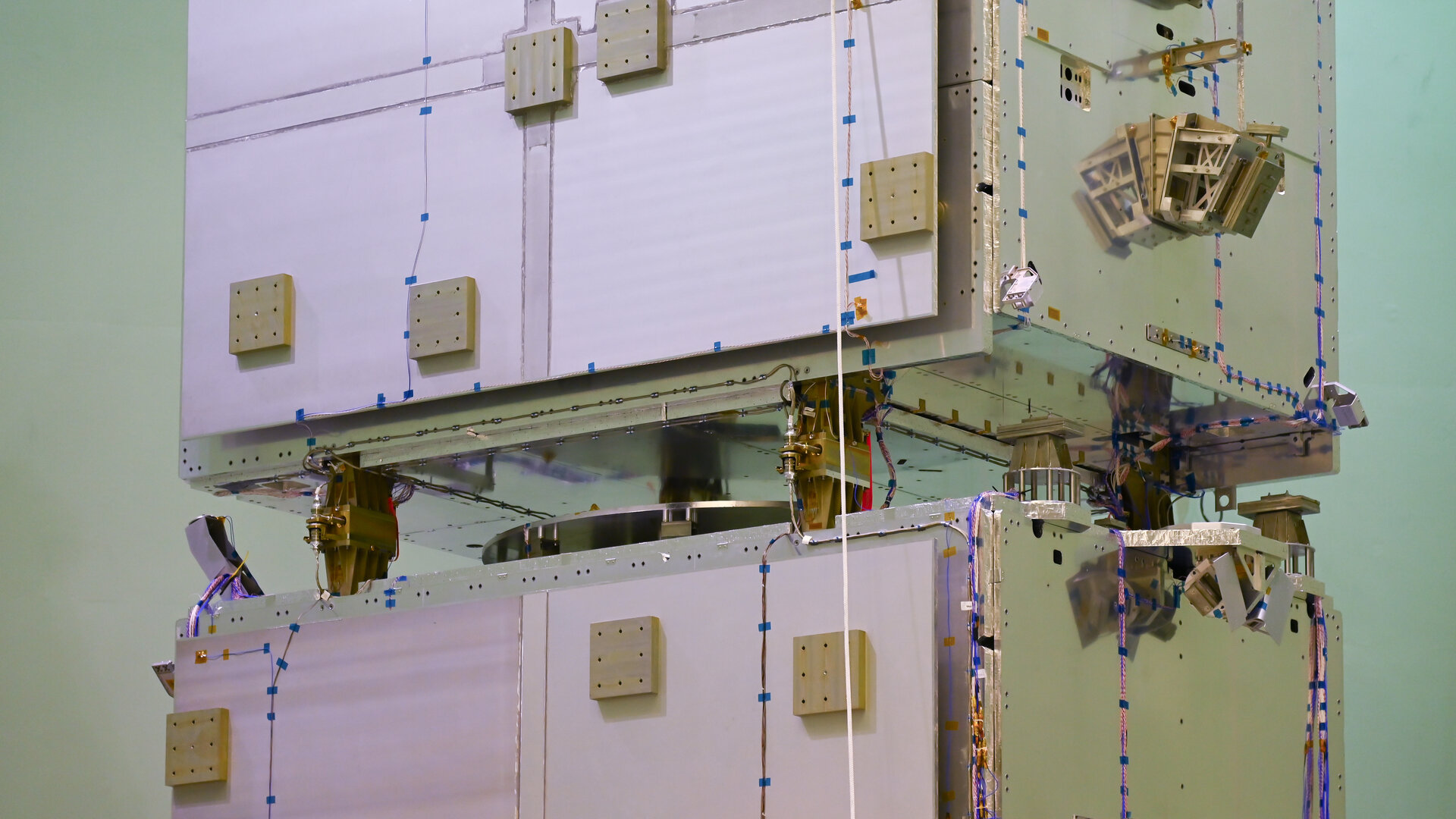Galileo Second Generation satellite aces first hardware tests
The new Galileo satellite model from Thales Alenia Space underwent mechanical and signal performance testing this summer at ESA’s ESTEC Test Centre. Structural models resisted launch-like noise and vibrations while an electrical model proved its ability to send Galileo signals - a major milestone in the development of Galileo’s Second Generation.
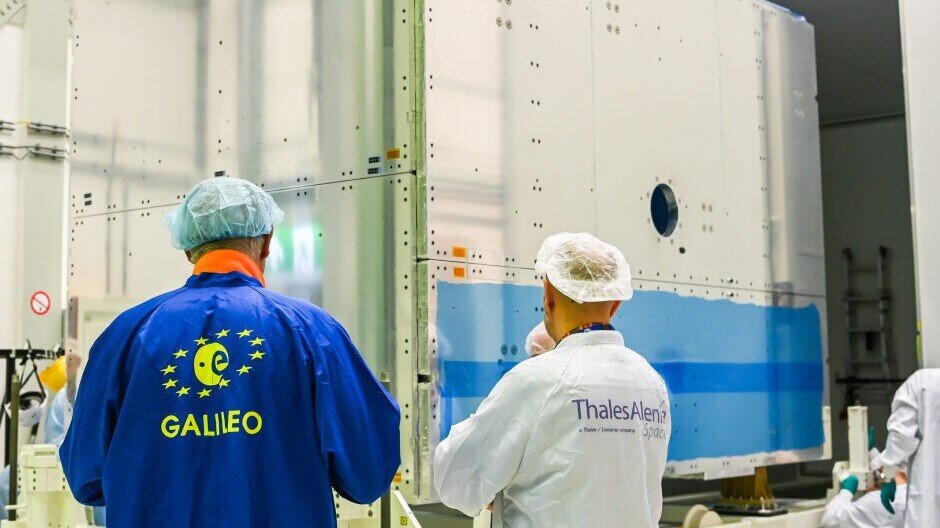
Europe’s Galileo is the world’s most precise satellite navigation system, providing metre-level accuracy to more than four billion users worldwide. It currently comprises 28 satellites in orbit and 10 more are due to be launched, after which a new generation of satellites, the Galileo Second Generation or G2, will revolutionise the fleet with enhanced capabilities.
“G2 satellites will be much larger than those of the First Generation, use electric propulsion, host a more powerful navigation antenna, carry more and even better atomic clocks on board and have fully digital payloads,” explains ESA's Galileo Second Generation Project Manager Miguel Manteiga Bautista. “The modular architecture will offer a high degree of flexibility to accommodate more equipment and inter-satellite links will be enabled,” he adds.
ESA, as Galileo’s design authority and system development prime and on behalf of the European Commission, awarded in 2021 the first satellite-building contracts to Thales Alenia Space (IT) and Airbus Defence and Space (DE) to create two independent families of six satellites each.
Galileo Second Generation has now reached a significant milestone. Between July and September, two structural models of the Thales Alenia Space satellite and an electrical model of its navigation payload underwent mechanical and signal performance assessment at ESA’s ESTEC Test Centre in Noordwijk, the Netherlands. “The models successfully passed the stringent mechanical, acoustic and radiofrequency tests required by the Galileo Programme,” confirmed Tiziano Sassorossi, Director of G2SB1 Project at Thales Alenia Space Domain Observation and Navigation Programs Italy.
Dual launch structure approved
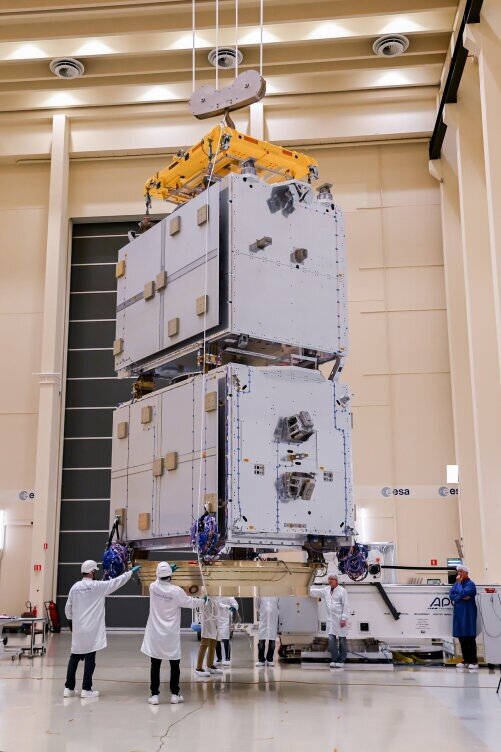
A structural model is a mechanical representative of a satellite that has dummy masses instead of equipment, tank, propellant and appendages. Thales Alenia Space sent two structural models from Turin, Italy, to ESTEC, where they were exposed to the harsh environmental conditions present during a rocket launch.
First, the enormous sound horns at ESA’s Large European Acoustic Facility (LEAF) blasted the models with noise equivalent to multiple jet aircraft lifting off simultaneously. Then, they had to withstand earthquake-like vibrations at the Hydraulic Multi-axis Shaker (Hydra). Finally, they endured a mechanical shock alike to what a satellite experiences during its separation from a rocket.
“The satellites will be launched in pairs, one on top of each other and connected to the launcher until separation, so we had to test them in this configuration. Each satellite is over 2000 kg and when stacked, they reach a towering height of seven meters. Seeing the models undergo testing in this configuration was both impressive and nerve-wracking, and we are thrilled that this new design concept for Galileo has received mechanical qualification” said Alberto Bramante, ESA’s Head of Management Office for Thales Alenia Space G2 Satellite.
Antenna under scrutiny
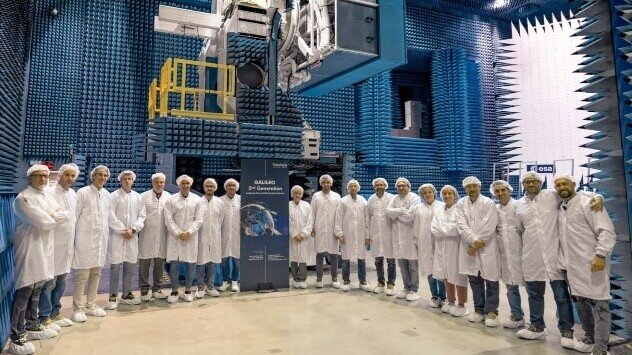
The G2 satellites will carry an innovative navigation payload that is fully digital and reconfigurable in orbit to actively respond to evolving user needs. An electrical model of the Thales Alenia Space payload, an aluminium box with flight-like equipment and antenna, was tested to assess its signal performance.
At ESTEC’s Hertz facility, an anechoic chamber isolated from the outside world with radio- and sound-absorbing internal walls, the model radiated transmission in different modes and demonstrated compatibility with Galileo First Generation signals.
Full steam ahead for G2
The Galileo Second Generation is in full development phase after the main procurement batch was completed this summer. The European industry is now building the satellites and ultra-precise atomic clocks, and developing the system testbeds, ground mission and ground control segments.
In parallel to Thales Alenia Space, Airbus Defence and Space is developing the other half of the constellation, which will be tested for mechanical and signal performance at the company’s facilities in Germany.
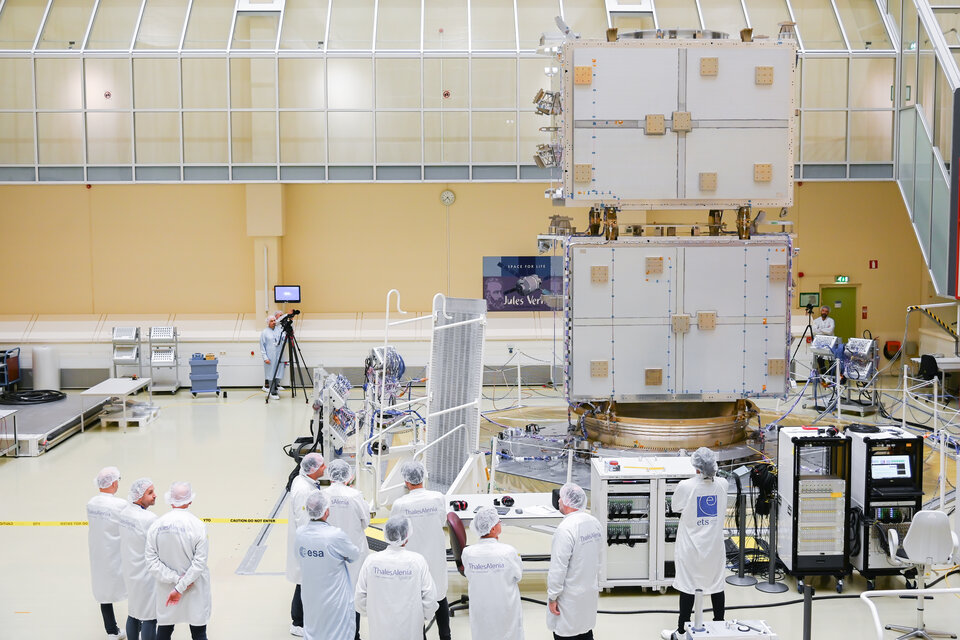
After all testing on the models is complete and the final design details confirmed, the first flight models of both families will be assembled and integrated before undergoing functional and environmental verification, including for some satellites a radiated test campaign in the new test chamber for space antennas being built at ESTEC, Hertz 2.0.
This new generation of satellites will start joining the existing constellation in the upcoming years. "G2 is designed to stay in orbit for at least 15 years. We are working hard to make sure the new satellites enable our high-performing navigation system Galileo to go forward into the future with novel capabilities and additional robustness," declares ESA’s Head of Galileo Space Segment Management Office, Andrea Cotellessa.
ESA's Director of Navigation Javier Benedicto confirms: “This first milestone is a powerful testament to the capabilities and unwavering dedication of the European industry and reaffirms ESA’s commitment to redefine the boundaries of satellite navigation. I cannot wait to see the many parts come together to bring to life an even better performing Galileo system, so this EU programme can continue serving European and world citizens.”
About Galileo
Galileo is currently the world’s most precise satellite navigation system, serving close to four billion users around the globe since entering Open Service in 2017. All smartphones sold in the European Single Market are now guaranteed Galileo-enabled. In addition, Galileo is making a difference across the fields of rail, maritime, agriculture, financial timing services and rescue operations.
Galileo is a flagship programme of the European Union, managed and funded by the European Commission. Since its inception, ESA leads the design, development and qualification of the space and ground systems, as well as procuring launches. The EU Agency for the Space Programme (EUSPA) acts as the service provider of Galileo, overseeing the market and application needs and closing the loop with users.
For more info about Galileo: https://www.usegalileo.eu/EN/


